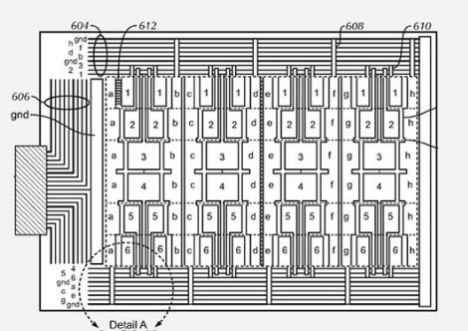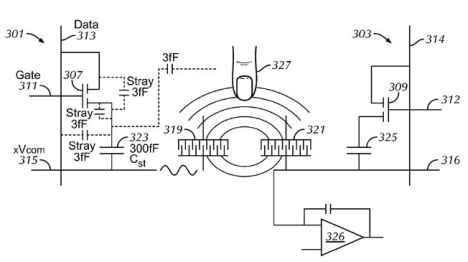Apple to fuse touch and LCD technologies to make thinner, clearer screens
Apple has always been known to be on the cutting edge of touch-screen technology — even Apple haters will grudgingly admit that there is yet to be a single device that utilises capacitive touch like the iPhone does. And since Tomorrow’s devices, it seems, are not meant for conventional input, Apple has been spending a considerable amount of R&D time on further developing its touch screen technology. A recent paper released by the US Patent & Trademark Office gives us a glimpse of just be what the underlying technology in the imminent and much-hyped Apple Tablet might be. The patent is for a “display with dual-function capacitive elements.” For those of you who don’t have a PHD hanging on the wall, here is a breakdown in mortal-speak:
The way conventional touchscreens work is by having a touch-sensitive layer on top the a regular LCD display. The touch-sensitive panel is nothing but a transparent grid consisting of a material that is able to store a charge. Voltage is applied throughout the panel and once a finger comes in contact with the surface the voltage changes. The UI processes then calculate the position of the touch event. Now because this additional capacitive layer is present, it naturally makes the display thicker. Also, even if the panel is transparent it does absorb some of the light of the underlying LCD panel. Apple’s breakthrough aims to make each individual pixel as a capacitive sensor in itself. This means no more additional layer for a touch sensor.
For the more technically inclined, this is achieved by the use of polycrystalline silicon instead of regular amorphous silicon for an IPS display. With polycrystalline silicon, the pixels can achieve a faster rate of switching. (Pixels anyway switch on and off at unperceivable rates). The pixels can then be used as a display in one instant and as a capacitative touch sensor in the next.
The patent application states that the technology will be utilised for a host of Apple’s mobile devices. But we can’t wait to see the technology on the fabled Apple Tablet.


